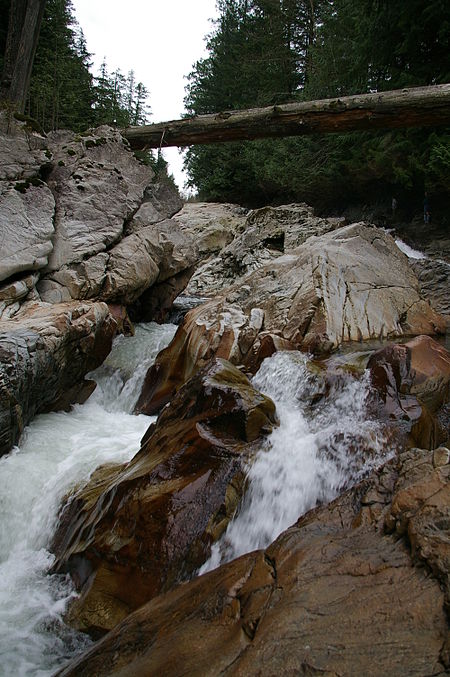Weeks Falls

Weeks Falls is a waterfall on the south fork of the Snoqualmie River, located near North Bend, Washington, USA, just south of Interstate 90 at exit 38. The falls are at the end of the road that goes past the Olallie State Park ranger headquarters. From the gravel parking lot, there is a paved accessible overlook to see the falls and a small area around the hydro-electric plant. There is also a ¼ mile accessible interpretive trail nearby.Weeks Falls has a small hydroelectric plant operated by CHI West which generates about 4.3 Megawatts peak. It is unusual because it operates without a dam. Instead, water is being drawn from the river above the falls and run down an underground channel to the generation unit at the bottom of Weeks Falls.
Excerpt from the Wikipedia article Weeks Falls (License: CC BY-SA 3.0, Authors, Images).Weeks Falls
Southeast Homestead Valley Road,
Geographical coordinates (GPS) Address Nearby Places Show on map
Geographical coordinates (GPS)
| Latitude | Longitude |
|---|---|
| N 47.43301 ° | E -121.64663 ° |
Address
Southeast Homestead Valley Road
Southeast Homestead Valley Road
Washington, United States
Open on Google Maps








